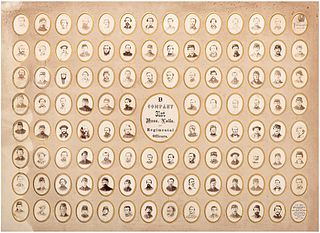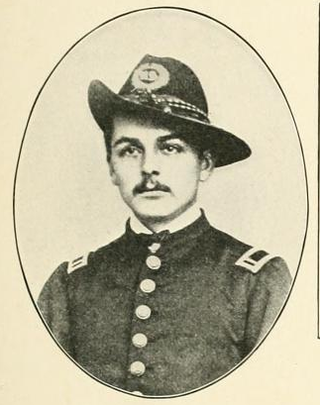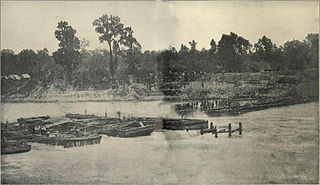The 19th Kentucky Infantry Regiment was an infantry regiment that served in the Union Army during the American Civil War.
The 114th Ohio Infantry Regiment, sometimes 114th Ohio Volunteer Infantry was an infantry regiment in the Union Army during the American Civil War.
The 83rd Ohio Infantry Regiment, sometimes 83rd Ohio Volunteer Infantry was an infantry regiment in the Union Army during the American Civil War. It was nicknamed "The Greyhound Regiment".
The 15th Maine Infantry Regiment was an infantry regiment that served in the Union Army during the American Civil War.

The 3rd Rhode Island Cavalry Regiment was a cavalry regiment that served in the Union Army during the American Civil War. The regiment briefly served dismounted as infantry in the defenses of New Orleans, June–September, 1864.
The 49th Regiment Indiana Infantry was an infantry regiment that served in the Union Army during the American Civil War.
The 16th Regiment Indiana Infantry was an infantry regiment in the Union Army during the American Civil War. In August 1863, the regiment was converted to mounted infantry for the remainder of the war.

The 1st Missouri Colored Infantry Regiment was an infantry regiment of the Union Army's United States Colored Troops which served during the American Civil War. It was redesignated as the 62nd Regiment of United States Colored Troops on March 11, 1864.

The 13th Connecticut Infantry Regiment was an infantry regiment that served in the Union Army during the American Civil War.

The 75th New York Infantry Regiment was an infantry and mounted infantry regiment in the Union Army during the American Civil War.

The 31st Massachusetts was an infantry regiment that served in the Union Army during the American Civil War. It was converted into a mounted infantry regiment in December 1863.

The 114th New York Infantry Regiment was an infantry regiment in the Union Army during the American Civil War.

The 176th New York Infantry Regiment was an infantry regiment in the Union Army during the American Civil War.

The 133rd New York Volunteer Infantry was an infantry regiment in the Union Army during the American Civil War.

The 160th New York Infantry Regiment was an infantry regiment in the Union Army during the American Civil War.

The 165th New York Infantry Regiment was an infantry regiment in the Union Army during the American Civil War.
The 173rd New York Infantry Regiment was an infantry regiment in the Union Army during the American Civil War.

The 163rd New York Infantry Regiment was an infantry regiment in the Union Army during the American Civil War.
1st U.S. Artillery, Battery F was a United States Army field artillery battery that was in service between 1821 and 1901, most notably in extensive service with the Union Army during the American Civil War. In that conflict, the battery was engaged at the battles of Pensacola, Fort Bisland, Vermilion Bayou, Port Hudson, and Mansura.

The 97th United States Colored Infantry was an engineer regiment designated as infantry as part of the United States Colored Troops that served in the Union Army during the American Civil War and fought in the Western Theater of the American Civil War in the Department of the Gulf. The regiment mustered in at Camp Parapet April 28, 1863, as the 1st Louisiana Engineers, but two companies, D and F had been hastily mustered into service two days earlier, April 26, 1863, and sent to Berwick City to remove obstructions from the Bayou Teche. The enlisted men of the 1st Louisiana Engineers were formerly enslaved men in the “engineer camp” who had been previously providing labor for the U.S. Army between New Orleans and Baton Rouge. Several of the newly commissioned company grade officers had been enlisted men of the 42nd Massachusetts Volunteer Infantry who had been on engineer service superintending the contraband laborers from the camp. In the summer of 1862, General Phelps had previously requested to arm the men at Camp Parapet and put them in uniform to defend the city of New Orleans but his request was denied. Gen. Banks ordered Phelps to have the men cut down all the trees between Camp Parapet and Lake Pontchartrain. Phelps resigned over the issue stating, "...while I am willing to prepare African regiments for the defense of the government," he continued, that he " was not willing to become a mere slave driver."








